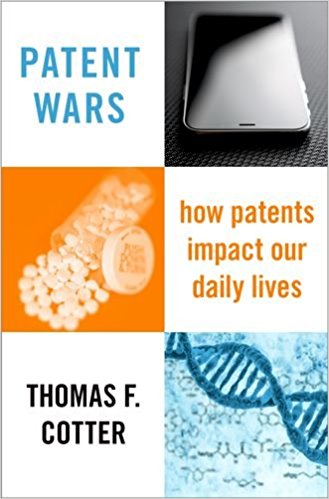Not long ago, I published an op-ed on Law360 titled Congress Shouldn’t Overturn EBay Patent Injunction Standard. In the course of the op-ed, I noted two pending bills (the STRONGER Patent Act and the Restoring America's Leadership in Innovation Act) which, if enacted, would to some degree overturn the Supreme Court decision (eBay) holding that the decision whether or not to enter an injunction is discretionary. Although I have been critical of some aspects of the eBay decision as it has been implemented, on balance I firmly believe that it has done more good than harm, and that any proposals to return to a system of near-automatic injunctions would be a bad idea.
Anyway, I somehow managed to miss another pending bill, the Inventor Protection Act, filed in July by Congressman Dana Rohrabacher and discussed recently on IPWatchdog. The bill would amend the Patent Act by defining an "inventor-owned patent" as "a patent held entirely by the inventor of the claimed invention," and conferring various protections upon inventor-owned patents, including (1) forbidding the USPTO from reexamining, reviewing, or otherwise making "a determination about the validity of an inventor-owned patent unless voluntarily agreed to by the inventor"; (2) allowing inventors to file suit for the infringement of inventor-owned patents in any judicial district in which "the defendant is subject to the court's personal jurisdiction or where the defendant has committed an act of infringement, regardless of whether the defendant
has a regular and established place of business in such district," thus overruling TC Heartland as it applies to inventor-owned patents (hello, forum shopping!); (3) forbidding transfers of such actions "to another district for convenience without consent of the inventor"; and (4) promising an expedited trial and limitations on discovery. Most relevant for purposes of this blog, however, are the proposed changes to the law of remedies. These would include not only restoring the presumption of irreparable harm (which could be overcome by clear and convincing evidence), but also permitting the inventor to opt for "simplified damages" in lieu of (nonsimplified, everyday) damages under section 284. Here's what the bill says:
“(I) the total profits attributable to the infringing party’s use of the patented invention; or
“(II) 25 percent of the sales attributable to the infringing party’s use of the patented invention; and
“(ii) any interest and costs as fixed by the court.
“(i) TREBLE DAMAGES AVAILABLE.—If the court finds the infringement to be willful, the court may award damages equal to no more than three times the amount of any damages found in subparagraph (A), but shall not include any royalty payments.
“(ii) PRESUMPTION OF WILLFULNESS.—Infringement shall be presumed willful if the infringing party is an expert in the field of the invention.
“(C) ATTORNEYS FEES.—If an inventor successfully brings a claim for infringement of their inventor-owned patent, the court shall award the inventor any amount of their attorneys fees that exceeds 10 percent of the amount of any damages the court awards to the inventor.”
This just boggles the mind. Although, as I have written elsewhere on several occasions, there is a theoretical argument to be made in favor of requiring an intentional infringer to disgorge its profits attributable to the infringement (that is, the profit it earned above what it would have earned from the use of the next-best available noninfringing alternative), perhaps as an alternative to enhanced damages, I don't think it makes sense as a remedy for infringement generally due to its potential overdeterrent effect. And as the above text indicates, the bill contemplates that courts could award disgorgement and still award (up to) treble damages for willful infringement (and there would be that "presumption of willfulness" where the defendant "in an expert in the field of invention"). And why award, as an alternative to disgorgement, 25% of the sales (revenue?) attributable to the infringing party's use of the patented invention? What's so magic about 25%? Would any of this be tied into the economic value of the invention, that is, the value to the user over and above the value the infringer would have accrued from using the next-best noninfringing alternative?
More to the point, have any of the sponsors of this bill thought at all about the rent-seeking and gaming that would ensue from enacting a class of protections solely for the benefit of inventor-owned patents? Or about how any of this would affect consumers?
I certainly understand that patent litigation (including, most definitely, the damages portion of trial) can be enormously expensive, and that there may be benefits in considering reforms that would simplify some aspects of it, particularly when the stakes are comparatively small. (I talk about some of this stuff in my Patent Damages Heuristics paper; and I would suggest in addition that reforms such as creating a small(er)-claims-type court patterned after the Intellectual Property Enterprise Court in the U.K. might be worth considering.) But the proposals floated in the Inventor Protection Act strike me as rather poorly thought out. Fortunately, I can't imagine that this bill stands much of a chance of passing . . .
